Sweet Summer Bliss: Lavender Lemonade Recipe for Refreshing Sips
Summer heat melts away with a refreshing lavender lemonade recipe that sparkles with herbal charm.
Fragrant purple blossoms dance through each tangy sip, creating a drink both elegant and unexpected.
fresh lemons burst with citrusy brightness, perfectly complemented by delicate lavender soothing essence.
This simple yet sophisticated beverage brings a touch of sophistication to any gathering.
Floral notes weave through crisp, tart flavors, making each glass a delightful sensory experience.
Craft this cooling libation and transport yourself to a peaceful Provençal garden with just a few ingredients.
You’ll fall in love with this enchanting drink that blends summer most beloved flavors.
What Makes Fresh Lavender Lemonade So Refreshing
Fresh Lavender Lemonade: What You’ll Need
Base Ingredients:Flavoring Ingredients:Optional Ingredients:How to Mix Fresh Lavender Lemonade at Home
Step 1: Warm Water And Sugar
Combine water and sugar in a saucepan, heating over medium flame until the sugar completely dissolves and the mixture starts bubbling.
Step 2: Infuse With Lavender
Remove the pan from heat and gently stir in:Allow the ingredients to blend and release their aromatic essence.
Step 3: Create Flavor Depth
Let the lavender-infused mixture rest and steep for two full hours, allowing the flavors to develop and intertwine beautifully.
Step 4: Strain The Liquid
Pour the mixture through a fine-mesh strainer, using a spoon to press the lavender flowers and extract every last drop of flavor.
Step 5: Build The Lemonade
In a large pitcher, combine:Stir thoroughly to blend all components.
Step 6: Add Color And Style
If desired, introduce a few drops of natural food coloring to create a soft, appealing hue.
Step 7: Garnish And Serve
Pour the lemonade over ice, decorating with:Enjoy this refreshing summer beverage that brings elegance to any gathering.
Tips for Perfect Lavender Lemonade
Lavender Lemonade – Creative Flavor Ideas
Serving Up Lavender Lemonade at Gatherings
Storing Lavender Lemonade for Later
FAQs
Yes, culinary lavender is completely safe and edible. Always use food-grade lavender specifically meant for cooking to ensure quality and safety.
You can purchase dried lavender at specialty grocery stores, farmers markets, health food stores, online spice retailers, and some well-stocked supermarkets in the herb and spice section.
Fresh lavender works well too. Use about 1/3 more fresh lavender compared to dried, and ensure it’s organic and pesticide-free from a reliable source.
The flavor is mild and subtle. Steeping time affects intensity, so you can adjust steeping duration to make it more or less pronounced according to your taste preference.
Print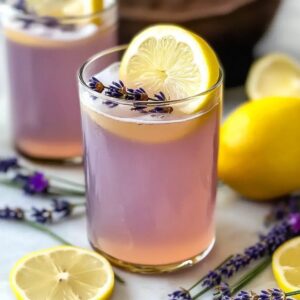
Lavender Lemonade Recipe
- Total Time: 2 hours 15 minutes
- Yield: 8 1x
Description
Refreshing lavender lemonade brings Mediterranean sunshine to your glass with delicate floral notes and zesty citrus charm. Summer sips become pure bliss when herbal elegance meets classic tangy sweetness, inviting cool relaxation in each crystal-clear pour.
Ingredients
Main Ingredients:
- 2 cups fresh lemon juice (about 10–12 lemons)
- 6 cups water, divided
- 3 tablespoons dried culinary lavender
Sweeteners:
- 1/2 cup granulated sugar
- 1/4 cup honey
Garnish and Optional Ingredients:
- Blue or purple food coloring (optional)
- Lemon slices for garnish
- Extra lavender sprigs for garnish
Instructions
- Create a sweet syrup by heating water and sugar in a saucepan over medium-high temperature until the sugar completely dissolves and the mixture reaches a rolling boil.
- Remove the syrup from heat and immediately incorporate honey, stirring until fully blended, then add dried lavender to infuse the liquid with its delicate floral essence.
- Allow the aromatic mixture to steep at room temperature for approximately 120 minutes, enabling the lavender to release its full flavor profile.
- Position a fine-mesh strainer over a clean container and carefully pour the infused liquid through, gently pressing the lavender buds to extract maximum flavor intensity.
- Transfer the strained lavender syrup into a large pitcher and combine with freshly squeezed lemon juice and cold water, stirring thoroughly to ensure uniform blending.
- Optional: Enhance the visual appeal by adding a few drops of purple food coloring to create a soft, lavender-tinted beverage.
- Chill the lemonade completely, then serve over abundant ice cubes, garnishing each glass with delicate lemon slices and a sprig of fresh lavender for an elegant presentation.
Notes
- Customize sweetness by adjusting sugar levels to match personal taste preferences.
- Try fresh lavender instead of dried for a more vibrant, aromatic flavor profile.
- Create a low-calorie version by substituting sugar with stevia or monk fruit sweetener for a diabetic-friendly option.
- Elevate presentation by freezing lavender sprigs or lemon slices in ice cubes for an elegant summer drink garnish.
- Prep Time: 15 minutes
- Cook Time: 2 hours
- Category: Mocktails
- Method: Steeping
- Cuisine: American
Nutrition
- Serving Size: 8
- Calories: 120
- Sugar: 27 g
- Sodium: 5 mg
- Fat: 0 g
- Saturated Fat: 0 g
- Unsaturated Fat: 0 g
- Trans Fat: 0 g
- Carbohydrates: 31 g
- Fiber: 0 g
- Protein: 0 g
- Cholesterol: 0 mg

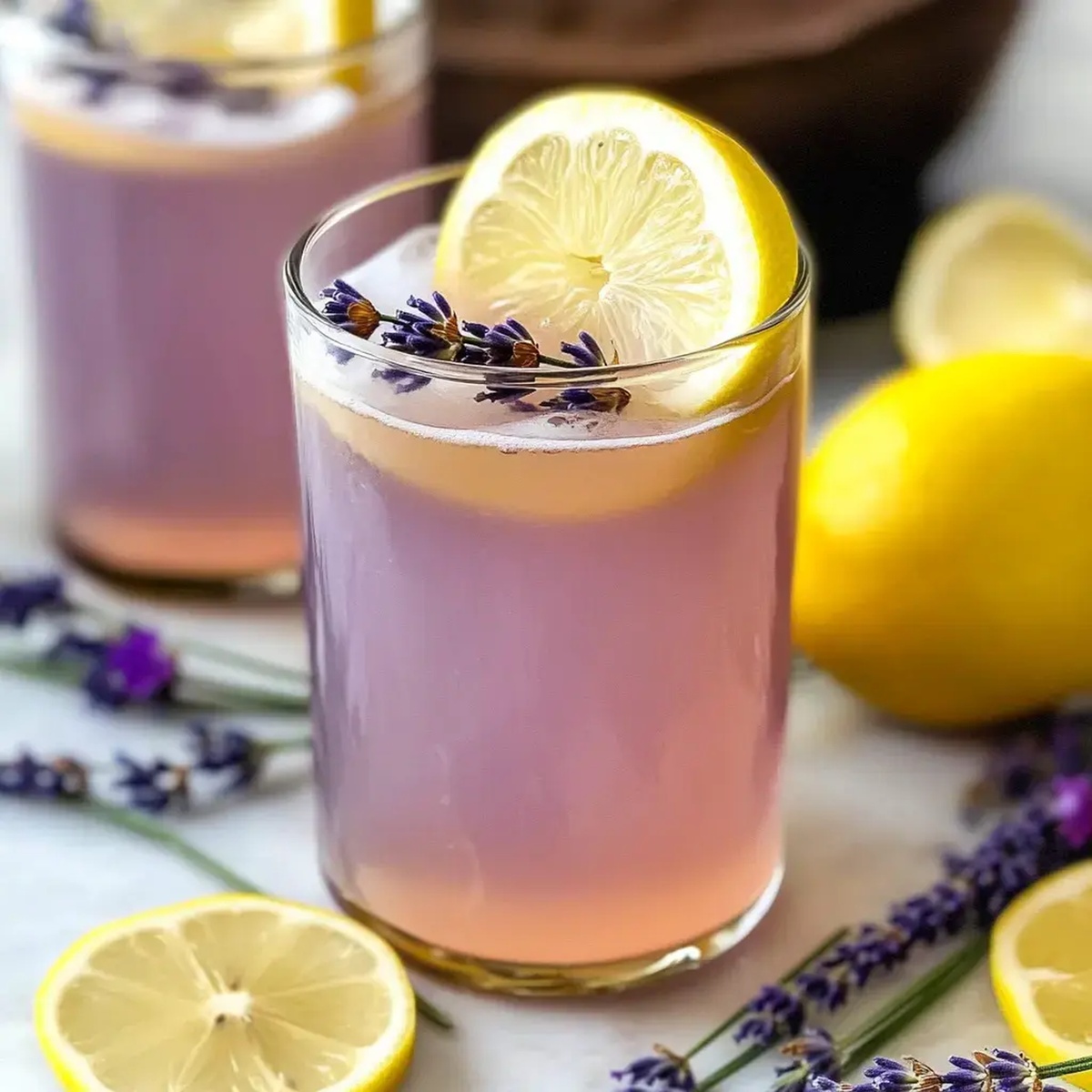
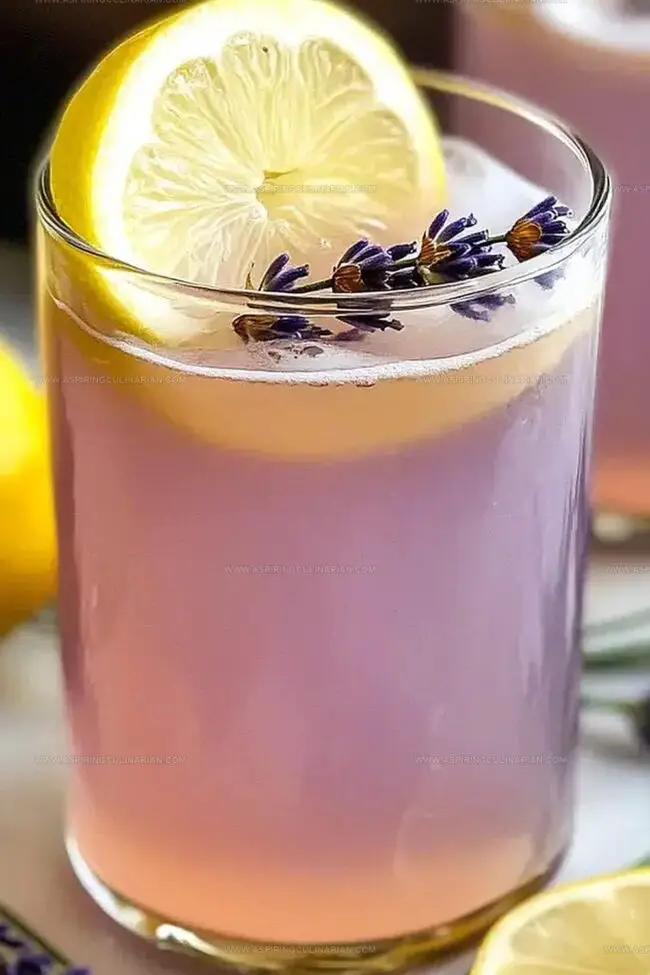
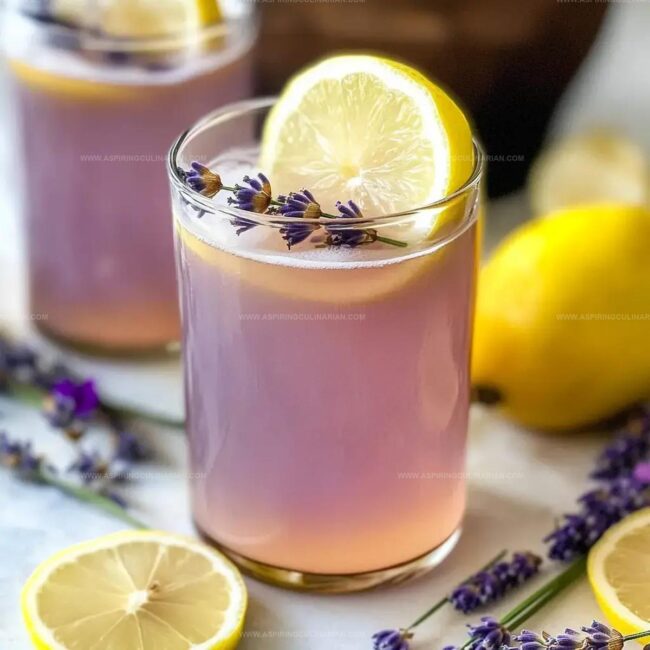
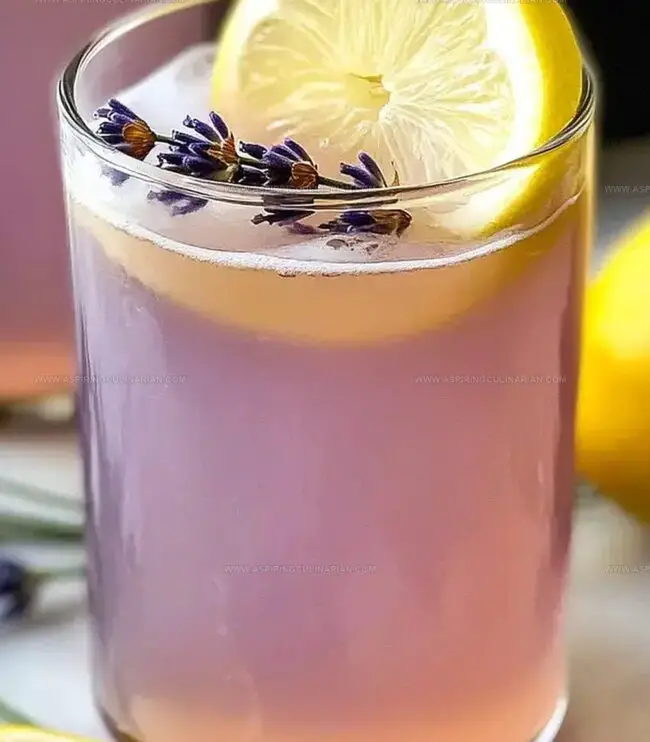
Nathaniel Brooks
Founder & Recipe Developer
Expertise
Farm-to-table cuisine, Seasonal recipe development, Culinary storytelling
Education
Ivy Tech Community College – Indianapolis, IN
Culinary Arts / Hospitality Administration & Events
Focused on hands-on training in classical and modern culinary techniques.
Nathaniel’s story starts in the foothills of the Appalachian Mountains, where farm stands, backyard gardens, and old family recipes shaped his love for real food. After graduating from Ivy Tech Community College in Indianapolis, he spent years working in farm-to-table kitchens, learning how to turn local, seasonal ingredients into something memorable.
Today, Nathaniel pours that same spirit into every single recipe on Aspiring Culinarian – recipes that feel real, comforting, and connected to the land. When he’s not in the kitchen, you’ll find him foraging wild herbs, chasing sunsets with his camera, or writing about the flavors that shaped his roots.